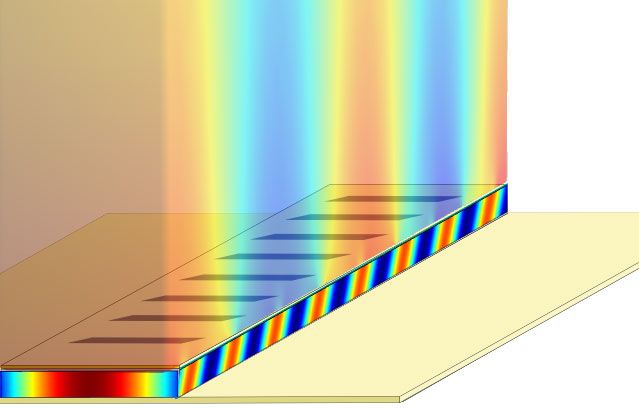Lasers have become indispensable to modern life since they were invented more than fifty years ago. The ability to generate and amplify light waves into a coherent, monochromatic and well-focused beam has yielded applications too numerous to count: laser scanners, laser printers, laser surgery, laser-based data storage, ultrafast data communications via laser light, and the list goes on.
Lasers are found in all shapes, sizes and colors. They can be made of gases (gas lasers) or based on solid materials (solid-state lasers). They can emit light of different colors (or wavelengths or frequencies), from X-rays (short wavelengths) to visible to far-infrared (long wavelengths). They can be as big as a building (free-electron lasers) or as small as a laser pointer (semiconductor diode lasers).
In the past decade, researchers have attempted to miniaturize photonic technologies for dense integration onto tiny semiconductor chips. To that end, researchers are seeking to develop even smaller nanolasers, of which plasmonic lasers are the tiniest.
The plasmonic laser, says Sushil Kumar, associate professor of electrical and computer engineering, uses metal films or nanoparticles to confine light energy inside the cavity from which laser light is generated. By storing light energy inside the cavity through a combination of electron oscillations in the integrated metal films or nanoparticles, plasmonic lasers utilize surface-plasmon-polaritons (SPPs) to store energy in dimensions that can be made smaller than the wavelength of light that they generate.
This unique ability of plasmonic lasers makes them attractive for potential applications in integrated (on-chip) optics, for transporting large swathes of data on-chip and between neighboring chips, and for ultrafast digital information processing.
Several problems need to be solved, however, before plasmonic lasers can be widely used. One of the main issues, says Kumar, is the difficulty of extracting light from the cavity of a plasmonic laser. The lasers are also extremely poor emitters of light, and whatever light does come out is highly divergent rather than focused, which severely limits their usefulness.
While most plasmonic lasers emit visible or near-infrared radiation, Kumar's group develops plasmonic lasers that emit long-wavelength terahertz radiation, which are also known as terahertz quantum-cascade lasers, or QCLs. As the brightest solid-state sources of terahertz radiation, says Kumar, QCLs are uniquely poised to find applications in biology and medicine for sensing and spectroscopy of molecular species, in security screening for remote detection of packaged explosives and other illicit materials, and in astrophysics and atmospheric science.
Terahertz QCLs, however, also emit highly divergent beams, which poses an obstacle to commercialization.
Kumar and his group have demonstrated that it is possible to induce plasmonic lasers to emit a narrow beam of light by adapting a technique called distributed feedback. They have experimentally implemented a scheme for terahertz plasmonic lasers that emit radiation at extremely long wavelengths (approximately 100 microns). The light energy in their laser is confined inside a cavity sandwiched between two metallic plates separated by a distance of 10 microns. Using a box-shaped cavity measuring 10 microns by 100 microns by 1,400 microns (1.4 millimeters), the group produced a terahertz laser with a beam divergence angle of just 4 degrees by 4 degrees, the narrowest divergence yet achieved for such terahertz lasers.
Kumar, who has conducted four years of experimental and theoretical research on the project, described the results in an article published today in Optica, the journal of the Optical Society of America. “Terahertz plasmonic laser radiating in an ultra-narrow beam” was written by Chongzhao Wu, a Ph.D. candidate in electrical engineering, and coauthored with Sudeep Khanal, also a Ph.D. candidate in electrical engineering, and John L. Reno of the Center of Integrated Nanotechnologies at Sandia National Laboratories in New Mexico.
Read the full story at the Lehigh University News Center.
-Kurt Pfitzer is Manager of Editorial Services with Lehigh University's Office of Communications and Public Affairs.


